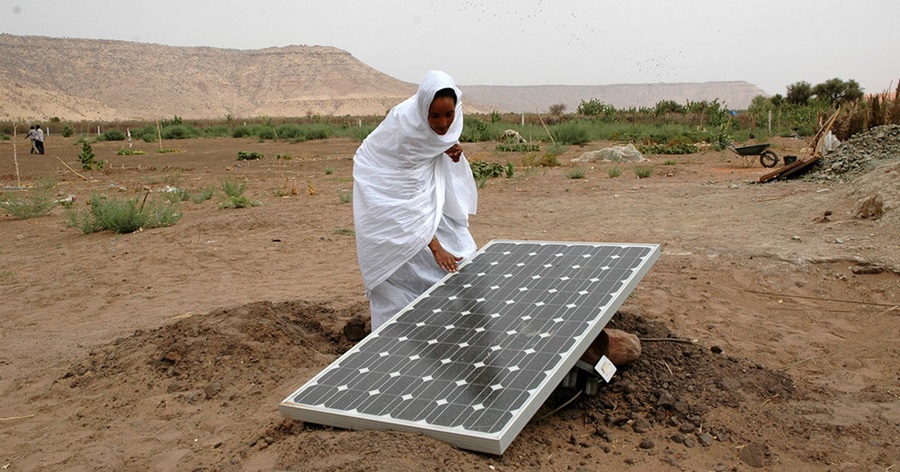Renewable energy installations such as the solar farms and wind turbines can not only prevent changes to the environment but they can also cause positive environmental change on their own, a new research has found. According to a study that has been published in the journal Science, installing wind as well as solar farms in the Sahara desert could lead to increase in rainfall and make the plants grow.
Countries, governments as well as energy providers across the world increasingly turn to wind and solar power in order to produce electricity as well as replace polluting and climate change-triggering fossil fuels. As more of such installations become commonplace, one group of researchers decided to find out how such renewable energy power sources may affect the environment. They found that turbine blades in the skies together with solar panels covering the ground are likely to trigger positive changes on the ground.
To explore the idea, the research team of scientists used the Sahara desert as a test bed since it has been a site for big renewable plants in the past few years. For the study, the authors explored what the Sahara Desert would look like if it got substantially covered with wind turbines as well as solar panels. Researchers simulated the effects of about 79 terawatts of solar panels as well as 3 terawatts of wind turbines. That is a huge number. The total amount of solar energy added by the world’s nations put together in the year 2017 was less than one tenth of a terawatt. Though the research may not be immediately relevant for renewable energy installations of today, it is a number which may be achievable and is pretty conceivable in the future.
The research found that if there are enough wind turbines and solar panels, the atmosphere around the installations would heat up: both due to wind turbines churning air as well as solar panels absorbing greater sunlight. The increased ground temperature, which if combined with the slower wind speeds due to the turbines, would then cause more rainfall.
According to the simulations that were carried out in the Sahara Desert, the total effect could be that the desert may see twice the rainfall than it does now due to the renewable energy installations. Though, on an average, it may be a small increase, the researchers believe that the rains may come in concentrated and focused places. They may end up producing around 20 inches of more rain every year. This is a big huge change having profound ecological ramifications.
- A few Green Christmas Ideas to Remember for This Festive Season - December 27, 2018
- Rain in the Sahara: Can Solar and Wind Installations Change Environment? - September 12, 2018
- Solar Energy Innovation to Curb Pollution in Water Bodies, Rivers, Oceans - June 21, 2018
- Greek woman entrepreneur: Environment friendly business and sustainable livelihoods - February 1, 2018

